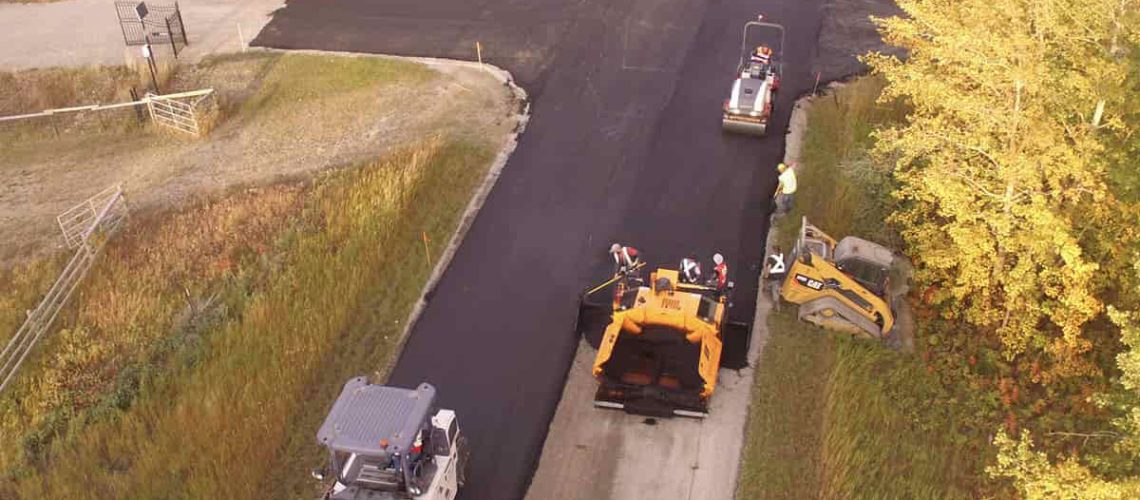From the removal of the existing surface to compacting the shiny new blacktop, the asphalt paving process plays the biggest role in the quality and lifespan of any asphalt surface. While it’s best left to the professionals, the asphalt paving process is something any home or commercial property owner should know, at the very least to ensure their asphalt contractor is doing a good job. To help you gain a better understanding of what it’s all about, we’ve outlined six basic steps to asphalt paving.
Step 1: Removal and Preparation of the Existing Surface
The first step in the asphalt paving process is to remove the existing surface (if any), regardless of whether it’s asphalt or concrete. Once any movable objects, such as signs, are moved off the surface, heavy machinery is used to break up the surface and any large chunks of debris. Next, debris is removed from the site and the now bare surface is checked and cleaned of any smaller debris and dust buildup to prepare it for sloping and grading.
Step 2: Sloping and Grading
Once the existing surface is removed and the asphalt contractors have a clean slate to work with, it’s time to slope and grade the gravel surface. As we’ve mentioned in our previous posts, water is one of the leading causes of damage to asphalt and can result in costly asphalt repairs. For this reason, any new asphalt surface needs to be properly sloped and graded to allow for adequate drainage once the asphalt sets. Using high-tech automatic graders, asphalt contractors carefully grade the bare surface to ensure proper drainage later on.
Step 3: Preparing the Asphalt
The next step in the asphalt paving process is to prepare the new asphalt to be laid. It’s a two-part process involving laying the subbase and preparing the asphalt mix. For simplicity’s sake, the asphalt subbase can be described as the layer between the bare surface and the asphalt. This provides a stable surface to support the new asphalt and is crucial to the structural integrity and lifespan of the final asphalt pavement. Once the subbase is laid, the asphalt mix is heated and prepared to be laid.
Step 4: Laying of Asphalt
The laying of the asphalt is perhaps the most recognizable step in the asphalt paving process, and is when heavy machinery is used to lay the hot asphalt over the subbase. As simple as it may sound, you might be surprised to learn that laying asphalt actually requires a great deal of skill, coordination, and specialized training to master.
Step 5: Testing Asphalt Distribution
Asphalt needs to be laid and compacted when it’s hot, so newly spread asphalt gets checked for uniformity and even distribution as soon as the first layer is spread. During this part of the asphalt paving process, asphalt contractors will check for and correct any clumps or uneven material distribution in the fresh asphalt, as well as bumps or areas where the asphalt was not spread evenly.
Step 6: Compacting the Asphalt
The last step in the asphalt paving process is to compact the newly laid and checked asphalt pavement. Compacting is an essential step in the overall process that involves using heavy machinery like rollers to compact and flatten the asphalt pavement. This ensures the surface holds together and can withstand the effects of day-to-day use, as well as helps smooth the surface and flattens out any minor bumps or aggregate sticking out of the fresh asphalt.
Now that you know the six steps to the asphalt paving process, you’ll be better prepared for what to expect when hiring an asphalt contractor to lay new asphalt pavement. Serving the Calgary community for over 20 years, Holloway Paving is a family-owned and operated asphalt paving company specializing in all types of asphalt and concrete paving and repairs. Contact us today for a free quote on your next asphalt project.








